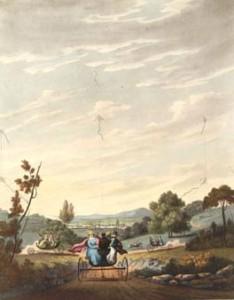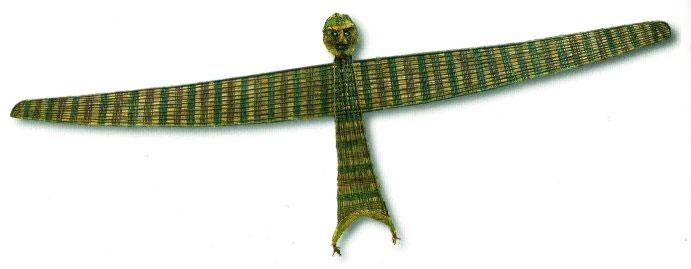NEW ZEALAND HAULED FROM THE SEA BY A KITE!
Though probably not in quite the way you expect- but please read on.
A life-long and involuntary (this is my excuse anyway) obsession with kites and kite flying can’t easily be indulged by staying at home, especially if that home is in the town of Ashburton (population 15,000), and that town is in New Zealand, which is about as far from anywhere in the world as it’s possible to get without falling off the edge.
For starters, if kite flying in its chronic form afflicts just one person in every 10,000 (a reasonable estimate?), then there should be just half of one other committed enthusiast here to share the fun with- which, depending on which half it is, might be somewhat handicapping (and there’s a thought: perhaps this was the inspiration for Martin Lester’s ‘top half’ and ‘bottom half’ kites). Fortunately there are more keen kite fliers in Ashburton now- but it can still be lonely pursuit in any small town.
And also, the wind is bad for kite flying in Ashburton- either too much or not enough. During the winter (now) it’s of the not-enough variety, which isn’t easy to deal with when you have a serious addiction.
So I travel away all the time, hanging out with my fellow afflicted, sometimes even in places with useful wind.
But, historically, Ashburton and New Zealand are not the kite-flying desert that I constantly whinge and complain about. Polynesians bought their kite tradition with them in the 13th century when they first arrived in ‘Aotearoa’ (In Maori; ‘the land of the long white cloud’, but pejoratively; ‘the land of the wrong white crowd’ since 19th century European colonisation). Maori kites are recognisably similar, by name, form and construction to those still flown in the South East Asian birthplace of kites, from where their Polynesian ancestors began the Pacific diaspora more than 3000 years ago.
European style kites came to New Zealand from the same origin but the long way around; from Indonesia via Islam through Spain, or perhaps via China through Italy.
And this history has just become more accessible. It’s now possible to research early NZ newspapers on-line through the site “Papers Past” which has almost all NZ newspapers up until about 1921 available. They’ve been scanned in and can be accessed via an OCR (optical character recognition) program.
It’s a treasure trove- not least because privacy was not the concern it is today, so personal details are there for the reading. A quick look at “kites” produced many more hits than could be read in any reasonable time, but already some fascinating avenues have opened. Here’s a sample (emphasis is mine):
The Ashburton Guardian (our local newspaper) of 6 Dec 1888 printed the following story:
 TRAVELLING BY KITE.
TRAVELLING BY KITE.
Some forty years back a mania set in amongst aeronauts who believed that carriages drawn by kites would supersede railways to a considerable extent. Among those who followed this fascinating study was Dr Pocock, an uncle of W.C. Grace, the champion cricketer. Dr Pocock made many journeys from Bristol to London in a little carriage drawn by a couple of large kites flying a quarter of a mile or so in the air, and he often attained a speed of fully 20 miles an hour. It was thought, too, that kites would supersede sails for ships, and, in fact, for some time scientific England went kite mad.
In order to thoroughly understand the action of these gigantic kites (some of them were as large as a ship’s mainsail), a certain John Farenheit- who we may observe was no relation of the famous chemist of that name- made several voyages of considerable distances in a basket, an ordinary wickerwork affair such as is used by laundresses, tied to a kite. The kite was started in Romford, in Essex. It was attached to a pony chaise, which was constructed as to be easily steered by means of handles, such as those on old-fashioned tricycles. In the chaise sat two men, one the brother of the kite traveller, the other a wealthy gentleman who spent a considerable fortune in hare-brain experiments of this description.
Well then, how about that! I’m not sure about the wickerwork bit; was John suspended at the kite or some way down the line?. And was he just an observer or did he exercise some control? Considering current efforts to pull ships with large parafoils and to generate electricity using kites, I fully understand the dissipation of fortunes on hare-brain experiments bit though- nothing much has changed!
And from the North Otago Times. (Dunedin is another small southern NZ town):
DUNEDIN, December 28, 1892
An extraordinary fatality occurred at South Dunedin today. A number of boys were engaged flying kites when a lad of 12, named Fiddes, son of a painter, trod on the kite of another boy named Foggarty, aged about 13. Foggarty struck him a blow, knocking him down. Fiddes died very shortly afterwards. Foggarty has been arrested.
Road rage of the kite variety
And another from the Nelson Evening Mail, 4th Jan 1901 (Nelson is a settlement to the north of Ashburton):
KITE-FLYING EXTRA-ORDINARY.
The residents of Nelson have been mistified during the holidays by beholding suspended in the heavens oblong shapes that resembled the air-ships described by George Griffiths in his fanciful war-of-the-future novels. Some regarded the curious visitors as portents, and wanted to know if the Russians, the Boers, or the Chinese had made an up-to-date invasion of the colony. On inquiry, however, it was ascertained that the queer looking objects were merely American Navy Blue Hill box kites, imported by Mr T. Blake Huffam, and flown by him for advertisement and amusement.
These kites range in size from about six feet to two feet in length and they are so constructed as to adapt themselves to combination, whereby two, three, and even four can be flown joined together, thus giving great lifting power. Their practical use is in raising banners, flags, advertisements, cameras, scientific instruments, etc, to a great height. It is no exaggeration to say that if two of the largest were flown combined they would lift a small boy off his feet, and carry him into the air if he could only hold on; while a sudden release of the slack of the string would throw down the strongest man.
And, in the Poverty Bay Herald of Nov 2 1912 there is an account of a lecture “KITE FLYING. AN ANCIENT MAORI CUSTOM. THE MANU-AUTE DESCRIBED” given by the Rev Archdeacon Walsh to the Auckland Institute which is too long to reprint here but which contains information that I was not previously aware of (or have forgotten)- like that Maui was a kite flier. (Maui is the legendary fisherman of Maori mythology who created Aotearoa/New Zealand by pulling it up from the sea.) Ah ha!-but as the Polynesian kite tradition derived (as do all kites I believe) from kite fishing, the implication could be that New Zealand was hauled out of the deep by a kite! Now there’s a creation myth I’ll vote for!

And this is just a start; as on-line access extends to everything in the world that’s ever been written and has survived somewhere, some very interesting things are going to come to light.
Peter Lynn, Ashburton, August 1 ’10. (actually I’m in Singapore, but the story line didn’t work so well from here).
